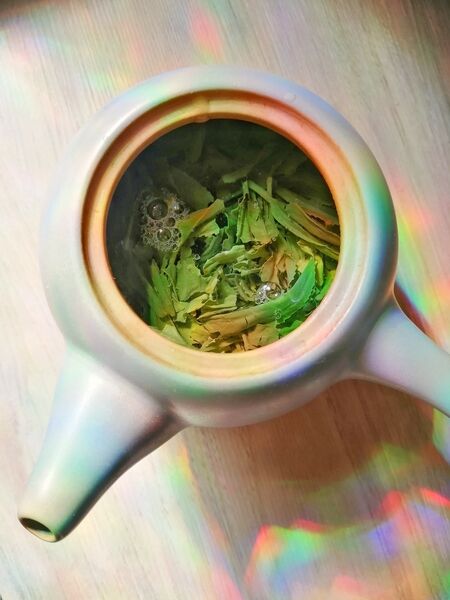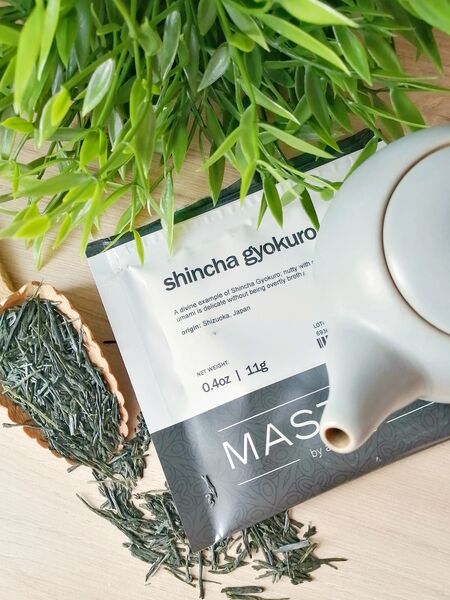Fresh Shincha: Japan’s First Flush Green Tea


Now that spring has finally arrived you’ll probably be hearing talk within the world of tea surrounding the word SHINCHA. But what is Shincha and why is it so highly sought after within the tea community?
What is Shincha?
Shincha - 新茶 or "new tea" refers to the first flush of tea leaves harvested after the dormant winter months. Usually, these leaves are then processed into Sencha but they are also sometimes processed into Gyokuro, Genmaicha and Hojicha.
Shincha Harvest lasts at most three or four days, starting in early spring but the dates change within different regions. Once the sprouts reach a mature enough age to be harvested, they must be picked immediately. If you wait a few days too long, you are just harvesting the first flush of Sencha and no longer Shincha. Farmers work as fast as possible and sometimes overnight to make sure they harvest as much fresh leaf as possible and that the leaves don’t overgrow.
After the harvest is over, they are processed as soon as possible, usually on the same day. After harvesting for Shincha, the rest of that first flush is referred to as Ichibancha (一番茶) aka first tea. The higher price that is usually attached to Shincha is a reflection of the intense hard work done by the farms and producers, the quality of the tea and the fact it is often produced in batches much smaller than your usual Sencha or Gyokuro.
While each tea farmer/producer differs slightly in their technique, the usual picking standard for Shincha is made from only the finest leaves (top 3 leaves) while the Sencha is made from the top 5 leaves. The reason that this first spring harvest is so valuable is partly due to the fact that the leaves had extra time to store nutrients after the winter. This means that it is rich in amino acids while the catechin and caffeine content is relatively low. All of which affect the overall taste, aroma and color and set Shincha apart from your usual Sencha.
If it rains throughout the entire Shincha harvest the tea leaves do have the potential to overgrow and at a pretty rapid pace. These leaves can then no longer be used to create shincha and are often marketed under the name “tsuyume", which translates into raindrop tea. This just goes to show that even just the slightest change in the environment around the tea can have so much effect on the final product.
Shincha Profile
In terms of taste, aroma and color, Shincha stands high above the rest. The taste compared to Ichibancha Sencha is sweeter, it has a distinct lack of any bitter notes and it's undeniably umami. The taste and aroma are both incredibly fresh and reminiscent of a rain-soaked lush green forest on a misty morning. Each year, however, taste and aroma will differ slightly due to differences in weather and many other things that affect teas while they are growing. Just like different vintages of wine, each harvest of Shincha has its own personality and nuances within its flavor profile.
The best quality of Shincha is usually characterized by its vibrant green color, fresh leafy umami taste, and unmistakable sweetness. This is a result of the tea not having time to develop a high caffeine content or astringent qualities. Believe it or not, rain before or during harvest can have an effect on the aroma and taste of the Shincha resulting in much more refreshing and aromatic green tea. These specific teas are even more highly sought after than other Shincha and even though they are usually higher in the price they tend to sell out pretty quickly.
How Shincha is Processed
Processing Shincha after harvesting is usually made up of 4 steps: Steaming, Drying and Bruising, Shaping and Final Roast.
Steaming is often the most challenging part of processing Sencha, even though it only lasts up to a minute the temperature control is crucial and has to be monitored diligently. If the temperature is too hot the trademark freshness and tannic elements are completely lost. On the other hand, however, if the temperature is too low the tea will taste flat and will be worth nowhere near as much. Before they steam each batch of Shincha, farmers will carefully examine the size and shape of the leaves as well as other characteristics to assure that they pick the right steaming process for those leaves.
The drying and bruising step of the Shincha process allows the oils and flavors within the tea leaves to be released into the water while steeping. A lot of Japanese green teas go through this specific step aside from Tencha which is the raw material used to create Matcha. During the shaping process, the farmers will once again examine the leaves for imperfections and then deveined and de-stemmed. The final short roasting that the leaves go through is called ‘’hi-ire’’. It's a very quick final roast and is done to rid the tea leaves of any extra moisture and become suitable for storage and can be stored for several months without going stale. Upon receiving your Shincha though it is important to make sure you start to drink it as soon as it is truly at its best when it is fresh.
How to Brew Shincha
When it comes to preparing Shincha, Use 2 to 3 grams of the leaf, 60 ml (2 oz) of water at 80°C (176 °F), and infuse for 35-40 seconds. The short brewing time keeps it from becoming bitter. If you are planning to do multiple steeps you can keep the same parameters, but we recommend shortening the infusion time. If however, you are preparing a Fukamushi Shincha, you should only steep for 30 seconds and your water should be at a lower temp of around 70°C as this particular type of Shincha can become bitter when over-steeped. Finding the steeping parameters that work for you is your particular taste is important though so be sure to try out different steep times, water temps etc during your first session with your Shincha.
